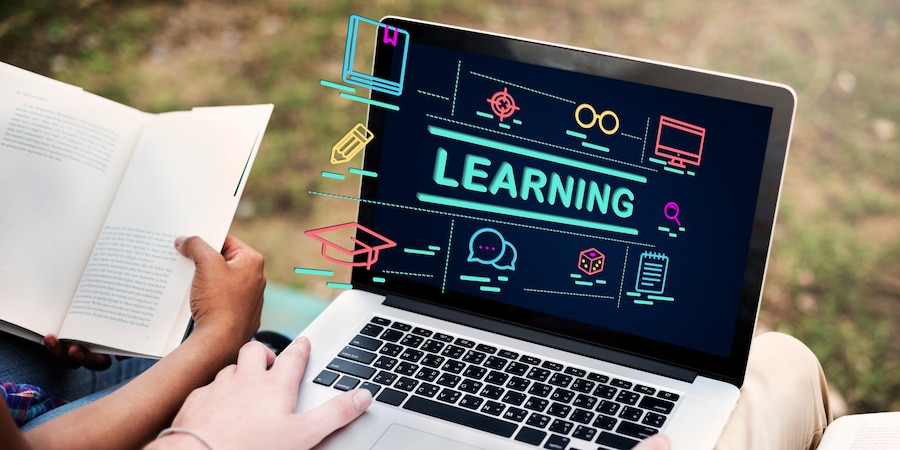Media education plays a crucial role in today’s society where information is readily available through various media channels. With the rapid growth of digital media, it has become essential for individuals to possess the necessary skills to navigate, analyze, and understand the messages conveyed through media platforms. Fuel Rectification will explore the significance of media education, the role of skills in media literacy, effective strategies for media education, incorporating technology, collaborative learning, addressing bias and misinformation, and evaluating the effectiveness of media education.
Introduction to Media Education
In an increasingly interconnected world, media education is of utmost importance. It refers to the process of equipping individuals with the knowledge and skills required to critically analyze, evaluate, and create media content. Media education goes beyond consuming media passively; it empowers individuals to be active participants in the media landscape. By understanding how media works and its influence, individuals can make informed decisions and become responsible digital citizens.
The Role of Skills in Media Education
Developing specific skills is an integral part of media education. These skills enable individuals to engage with media content critically, recognize bias, and evaluate the credibility of information. Three key skills that play a vital role in media education are:
- Critical Thinking Skills
Critical thinking skills allow individuals to question, analyze, and evaluate the messages conveyed through media. By developing critical thinking skills, individuals can distinguish between facts and opinions, identify logical fallacies, and interpret media content in a more nuanced manner. Critical thinking encourages a healthy skepticism and helps individuals become discerning consumers of media. - Media Literacy Skills
Media literacy skills encompass the ability to access, analyze, evaluate, and create media content. It involves understanding the techniques used in media production, recognizing the intended audience and purpose, and interpreting media messages. Media literacy empowers individuals to decode media content effectively, discern hidden agendas, and develop a more comprehensive understanding of media’s role in society. - Digital Literacy Skills
In today’s digital age, digital literacy skills are crucial for media education. These skills involve navigating digital platforms, understanding online privacy and security, evaluating online sources, and practicing responsible digital citizenship. Digital literacy equips individuals with the necessary skills to engage safely and responsibly in the digital realm, ensuring they can effectively navigate the vast amount of information available online.
Strategies for Effective Media Education
To ensure effective media education, educators can employ various strategies that encourage active learning and critical engagement with media content. Some of these strategies include:
- Developing Media Analysis Skills
Engaging students in media analysis exercises helps them develop critical thinking and media literacy skills. By deconstructing media messages, identifying persuasive techniques, and exploring media representations, students gain a deeper understanding of how media influences perceptions and shapes opinions. Analyzing various forms of media, including advertisements, news articles, and films, enhances their ability to interpret and critique media content effectively. - Encouraging Media Production Skills
Apart from analyzing media, students should also be encouraged to become media creators. By creating their own media content, such as videos, podcasts, or blogs, students develop a deeper appreciation for the complexities of media production. This hands-on approach allows them to apply their critical thinking and media literacy skills in a practical manner, enhancing their overall media education experience. - Creating a Safe and Inclusive Media Environment
It is essential to create a safe and inclusive media environment within educational settings. Educators should promote respect, empathy, and tolerance when discussing media topics. Encouraging open discussions and valuing diverse perspectives fosters an inclusive atmosphere where students feel comfortable sharing their thoughts and opinions. Creating such an environment ensures that media education remains a positive and enriching experience for all students.
Incorporating Technology in Media Education
Technology plays a significant role in media education, offering innovative ways to engage students and enhance their learning experience. Some effective ways to incorporate technology in media education include:
- Using Digital Tools for Media Analysis
There is a wide range of digital tools available that aid in media analysis and critical thinking. Online fact-checking websites, media literacy apps, and interactive media analysis platforms provide students with resources to evaluate the credibility and accuracy of media content. Integrating these tools into media education fosters independent thinking and helps students become more discerning consumers of media. - Teaching Digital Storytelling
Digital storytelling is a powerful way to engage students and encourage their creativity. By combining media production skills with storytelling techniques, students can create compelling narratives using digital tools. This approach allows them to develop their communication skills, think critically about storytelling techniques, and understand the impact of media narratives on different audiences. - Emphasizing Online Safety and Digital Citizenship
Media education should also include lessons on online safety and digital citizenship. Educators should educate students about potential online risks, such as cyberbullying, privacy breaches, and misinformation. Teaching responsible digital behavior, including appropriate online communication, ethical use of information, and respectful online interactions, ensures that students become responsible digital citizens who navigate the digital landscape safely and responsibly.
Collaborative Learning in Media Education
Collaborative learning plays a crucial role in media education as it encourages students to work together, share ideas, and learn from one another. Some effective strategies for collaborative learning in media education include:
- Group Projects and Discussions
Assigning group projects and facilitating group discussions enables students to collaborate and learn from their peers. Working in teams encourages the exchange of diverse perspectives, enhances critical thinking, and fosters communication and teamwork skills. Students can analyze media content together, share insights, and collectively develop a deeper understanding of media’s influence. - Peer Feedback and Assessment
Peer feedback and assessment provide students with valuable insights into their media projects and analysis. By evaluating their peers’ work and receiving constructive criticism, students learn to reflect on their own strengths and areas for improvement. Peer feedback also nurtures communication skills, empathy, and the ability to provide constructive criticism respectfully. - Building Communication and Teamwork Skills
Media education offers an opportunity to develop essential communication and teamwork skills. Collaborative activities, such as role-playing media scenarios, conducting interviews, or producing media projects as a team, enable students to practice effective communication, negotiation, and collaboration. These skills are transferable and valuable in various aspects of life beyond media education.
Addressing Media Bias and Misinformation
Media bias and misinformation are prevalent in today’s media landscape, making it essential for media education to address these issues. Educators can employ the following strategies to help students navigate bias and misinformation:
- Teaching Media Literacy and Fact-Checking
Educating students about media literacy and fact-checking equips them with the skills to evaluate the credibility of information. By teaching them how to identify bias, verify sources, and cross-reference information, students become more adept at recognizing misinformation and making informed decisions based on reliable sources. - Promoting Critical Consumption of News
Encouraging students to consume news from diverse sources and question the narratives presented helps them develop critical thinking skills. By comparing multiple news sources, analyzing different perspectives, and considering the underlying motivations, students can gain a more comprehensive understanding of current events and avoid falling prey to biased or misleading information. - Recognizing and Challenging Bias in Media
Media education should empower students to recognize bias in media representations and challenge stereotypes and misrepresentations. By analyzing how different groups are portrayed in media and discussing the implications of such representations, students develop a critical eye and become advocates for more balanced and inclusive media content.
Evaluating the Effectiveness of Media Education
To ensure the effectiveness of media education programs, it is essential to evaluate students’ knowledge and skills development. Some methods of assessing the impact of media education include:
- Assessing Knowledge and Skills Development
Regular assessments, quizzes, and projects can measure students’ understanding of media concepts, critical thinking skills, and media literacy. Evaluating their ability to analyze media content, identify bias, and apply media production skills provides valuable feedback on the effectiveness of media education programs. - Monitoring Media Consumption Habits
Tracking students’ media consumption habits and analyzing their media choices can offer insights into the extent to which media education influences their media preferences. Monitoring changes in their consumption patterns, such as seeking out diverse sources or critically engaging with media content, can indicate the impact of media education on their media habits. - Measuring Critical Thinking and Analysis Abilities
Assessments that require students to critically analyze media content, evaluate arguments, and identify persuasive techniques can gauge their critical thinking and analysis abilities. By measuring their ability to interpret and deconstruct media messages, educators can determine the effectiveness of media education in developing these skills.
Media education is essential in today’s digital age, as it equips individuals with the skills and strategies necessary to navigate, analyze, and create media content. By developing critical thinking, media literacy, and digital literacy skills, individuals become active and responsible participants in the media landscape. Incorporating technology, collaborative learning, and addressing bias and misinformation further enhances the effectiveness of media education.



